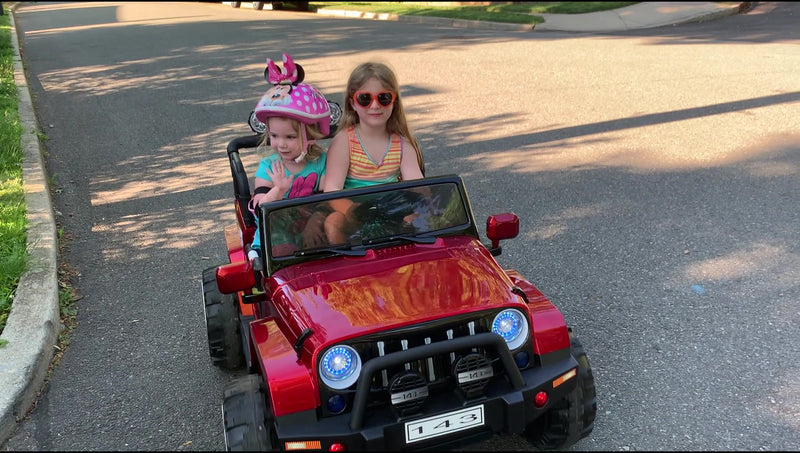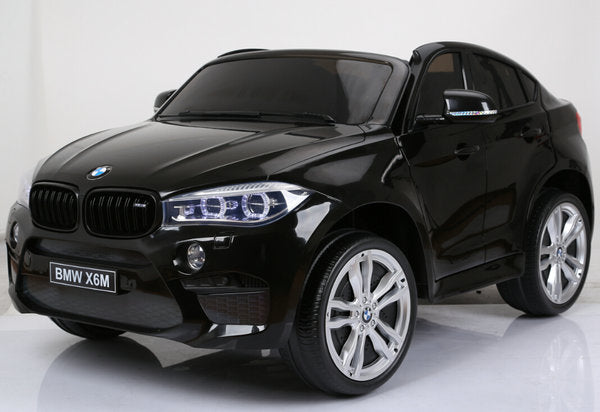Understanding the battery life and charging times of an electric ride-on kid car is vital to the safety of your children and optimum performance. What you need to understand - Battery Type
The majority of electric vehicles designed for children use rechargeable batteries, which are typically lithium-ion or lead acid batteries. In general, rechargeable lithium-ion batteries have more battery life and longer lifespan and also faster charging times than lead-acid ones.
Battery Capacity
The battery capacity is expressed in amp hours (Ah) and Watt hours (Wh). This determines how long an electric ride-on could run with a single charge. Batteries with high capacity allow for longer playtime, without needing recharge.
Run Time -
The duration of an electrical ride-on car refers how long it can operate continuously on one charge. This varies based on various factors like battery capacity, motor power, terrain, as well as the weight of the person riding.
For electric vehicles, the typical runtime is between 30 minutes and 2 hours with one battery charge. However, batteries with high capacity may have longer time-to-run.
Time to Charge -
Charging time is the amount of time needed to recharge the battery fully after it has been depleted. Charging times can vary depending on the battery capacity, charger specs and charging methods.
In general the time to charge electric vehicles is between 8 and 12 hours. Certain models, specifically those with lithium-ion battery technology might have faster charging times.
Follow the charging instructions given by the manufacturer to ensure battery safety and long-term durability. Overcharging or undercharging the batteries can result in a negative impact on their performance and lifespan.
Charging Methods Charging Method
Electric ride on vehicles typically come with chargers which plug into a standard home outlet. Some models can have quick charging or even an intelligent charger that monitors the battery's status of charge and adjusts the charging rate accordingly.
Make sure that the connectors and charging port on the ride-on cars are compatible, so that there is no harm to either the battery or electrical components.
Additional Batteries
Some electric ride on cars offer the option of purchasing additional batteries or batteries to extend play time. By having extra batteries available, you can swap out the battery that has been depleted to one that is fully charged to cut down on time.
Being aware of the life span of your electric kids' ride-on vehicle and its charging time will allow you to ensure that your child enjoys exciting and fun adventures as they explore their surroundings. Continuously charging the battery and observing appropriate charging guidelines will maximize battery life and performance. View the top rated McLaren kids car for website recommendations including ride of car, 2 seater electric cars, electric toy car, ride a toy, remote control childrens car, kiddies cars, ride on digger, electric ride on cars, electric ride along car, car for toy and more. .

What Are Some Of The Features That Are Available On Ride-On Cars?
There are many features included in ride-on vehicles. They include accessories and features that make the experience more engaging and realistic for children. Here are some common features included in the accessories for ride-on cars:
A lot of ride-ons have the ability with a light source that illuminates the road in front, which adds realism and the ability to see. This is particularly useful when driving through dimly lit areas, or during nighttime.
Horn Sounds
Most ride-ons have a horn which can be pressed, or a steeringwheel that produces the sound of a loud horn. This lets children pretend to drive an actual car and warn others.
MP3 Player Compatibility MP3 Player Compatibility
Some ride-ons are compatible with MP3 devices, allowing your child to connect their portable audio device through USB or an Auxiliary port. They can listen to their favorite songs while driving, which increases the fun factor of the ride-on vehicle.
Realistic Engine Noises -
The sound effects of a ride-on car can be integrated into the software to create realistic engine noises.
Remote Control
Some vehicles with ride-ons include a remote control for parents that lets parents use the car from a distance and also provide assistance or supervision when needed. Parents can control the ride-on vehicle, control its speed or even stop it from a distance. This allows them to feel safe and secure.
Seat Belts
Many ride-on cars feature safety harnesses or seat belts which secure the child inside the seat, providing an additional layer of security and also preventing the child from falling out of the seat during the play.
Working Doors
Many ride on vehicles feature doors with a functional design, which can be quickly closed and opened. They let children enter or exit the car quickly and realistically.
Storage Compartment
Some ride-on cars come with a storage compartment or trunk where children can store small toys or snacks. They can also store other things, adding convenience and versatility to the experience.
Adjustable Seats -
Certain ride-on cars come with adjustable seats, which can be moved forwards or backwards in order to accommodate children of different heights or to allow extra legroom for children as they increase in height.
Remote Emergency Stop Buttons -
Some ride-on cars come with an emergency stop button that can be operated remotely and give parents the ability to immediately stop their car in an emergency.
Ride-on cars come with accessories and features that increase the enjoyment, safety, and realism of their journey. Kids can play creative games and enjoy exciting adventures as they drive their own vehicle. Take a look at the top discover more on Mercedes ride on car for blog examples including riding digger, electric toy car, cars pedal car, kiddies cars, ride ons, two seater electric cars, cars pedal car, two seater childrens electric cars, ride on digger, remote control childrens car and more. .

What Are The Different Kinds Of Remote Controlled Kids Cars? What Are Their Advantages And Disadvantages?
The diverse sizes, designs, prices, and types of remote control children's car are readily available to meet the needs and budgets of all. Here's a brief overview of varieties, sizes, costs as well as pros and cons of remote control cars for children The types of remote control Children's Cars -
Electric RC Cars – Battery-powered remote-controlled cars that are suitable for indoor or outdoor use. They are available in many styles, including trucks, buggies, and sports cars.
Nitro RC Cars - Gas-powered remote-controlled cars that have more speed and performance, but require more maintenance and expertise to run. They are larger and usually more expensive than electric RC Cars.
Scale Models: Remotely controlled replicas of real-life vehicles such as cars, planes, trucks and boats. Scale Models can be found in various sizes ranging from 1-10 up to 1-24. Larger scales provide more detail and a realistic appearance.
Sizes -
The sizes of remote-control cars for children range from tiny miniature versions to larger-scale replicas. The size of the car can have an impact on the performance of a car as well as its speed and its handling characteristics.
Smaller cars which are lightweight and small, are great to be used indoors or by younger children. The larger-scaled cars are more durable and powerful, which makes them perfect for off-road and outdoor racing.
Prices
Prices differ based on the dimensions, features and build quality.
Micro-sized electric and nitro powered cars for RC are available in sizes that range between $20 and $100.
Models and top-of-the-line hobby RC cars cost from several hundred dollars up to 1000 dollars, depending on the level of detail.
Pros and Cons
Pros -
Adults and kids can both enjoy the fun and excitement of remote-controlled vehicles.
Skills Development Utilizing an RC vehicle helps develop hand-eye coordination, spatial awareness and problem-solving abilities.
Social Interaction - RC vehicles can be enjoyed with families and friends, encouraging the social aspect and cooperation.
Customization - Many RC vehicles can be upgraded by adding upgrades and accessories, which will enhance their performance and appearance.
Cons
Cost - A top-quality model that comes with the latest features could be costly, particularly hobby-grade models.
Children might find it difficult to operate RC cars at first.
Maintenance - Regular maintenance is required for cars with RC engines like cleaning, lubrication and repairs.
Safety concerns - RC car safety can be compromised by collisions, electrical hazards, and other dangers in the event that the vehicles aren't operated with care and supervision by an adult.
Children of all ages appreciate remote control cars. However, it is important to take into consideration aspects like the cost, size, and safety before choosing the best model. Hobby-grade RC cars are better for kids who are more mature and enthusiastic, while simpler cars are more suitable for young and beginner children. See the top kids cars kidscars.co.uk tips for website examples including electric rideons, childs ride on car, two seater electric cars, childrens electric ride on, toy and car, electric ride along car, digger ride, two seater electric cars, toy a car, digger ride and more. .
